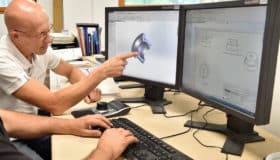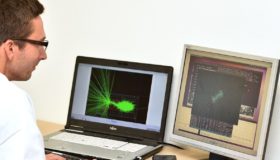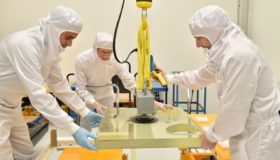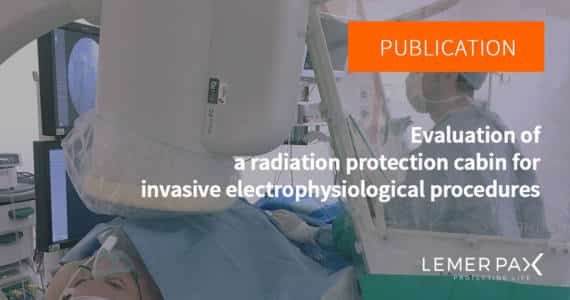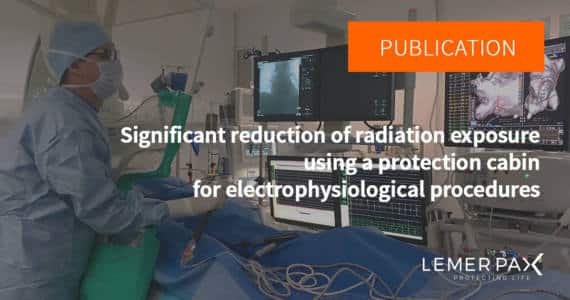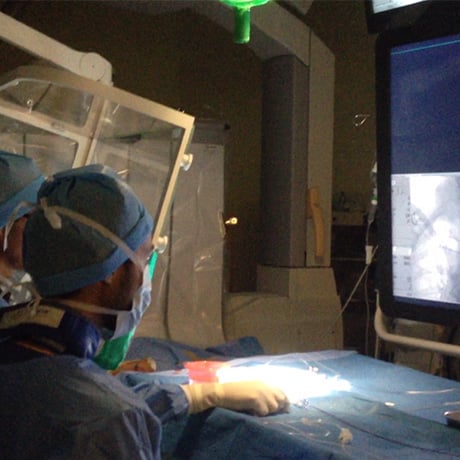
Use of prototype radioprotection cabin in vascular neuroradiology: dosimetry and ergonomics
Joel Guersena,*, Kaouthar Karmouchea, Jean-Baptiste Moyona, Estelle Osmonda, Maxime Poulina, Jean Gabrillarguesa,b, Betty Jeana,b, Emmanuel Chaberta, Frédéric Dutheila, Lucie Cassagnesa,b, Louis Boyera,b
a Pole d’imagerie et de radiologie interventionnelle, CHU de Clermont-Ferrand, 63003 Clermont-Ferrand, France
b ISIT UMR 6284 CNRS, Université d’Auvergne, Auvergne, France
Lead individual protection equipment is heavy, displays poor egonomics and protects the body areas it covers with ranging efficacy.
OBJECTIVE:
The aim of the study was to compare the performance of a prototype[1] radioprotection cabin in interventional neuroradiology, and to assess its suitability for routine use.
METHOD & RESULTS:
The radioprotection cabin used was a prototype derived from the Cathpax AF model with 2mm lead equivalent shielding on its front, left side and upper surfaces. A standard mobile shield was positioned behind the cabin to intercept radiation back-scattered from the walls of the procedure room.
The study required 24 TLDs in tablet form and TLDs for eye lens dosimetry:
- One set of 12 dosimeters was used for the procedures using the radioprotection cabin
- The remaining 12 dosimeters were used for the procedures when the standard IPE were worn
The detection threshold of the dosimeters was 10µSv
The quantities measured were Hp (0.07) for TLD tablets and Hp (3) for eye lens TLDs
Measures relative uncertainty was ±30%. It was an expanded uncertainty (95% confidence level, k = 2)
- 3 neuroradiologists were involved in the study
- The total number of procedures was 38 :
- 21 procedures were performed with the radioprotection cabin (19 arteriographies and 2 embolizations)
- 17 procedures were performed with the standard IPE (16 arteriographies and 1 embolization)
- The mean DAP of the procedures in the first group with the cabin was 15,467cGy.cm2, and it was 13,929 cGy.cm2 for the second group with the IPE.
The dosimetric results inside the cabin :
- Overall mean reduction of 74% in the Hp (0.07) dose equivalent received by the operators using the cabin
- The eye lens dose received (Hp (3)) was divided by 2 for the left eye
- The dose for the thyroid was divided by 4
- Doses to the thorax and left foot were both divided by 20
The ergonomic results inside the cabin :
- The ease of execution when fitting the guide and probe was considered to be moderately to highly satisfactory in 62% of cases
- The mobility of the cabin and hands was evaluated as moderately to highly satisfactory in 85% of cases
- The accessibility of equipment was scored moderately satisfactory in 75% of cases
LIMITS:
- The study was deliberately conducted on simple procedures
- The results were obtained with the addition of a rear screen
CONCLUSIONS:
The cabin indisputably reduced the doses of radiation received by the direct operators carrying out brain angiographies and embolizations. The radioprotective utility of the cabin was particularly significant for the body regions not covered by the standard IPE, in particular the head and the neck region. The weaknesses could be remedied by improvements to this prototype made by the supplier together with small changes in working habits.
Read the full publication clicking here.
[1] Comment from the manufacturer : the cabin was the first generation of Cathpax® AF made of stainless steel
